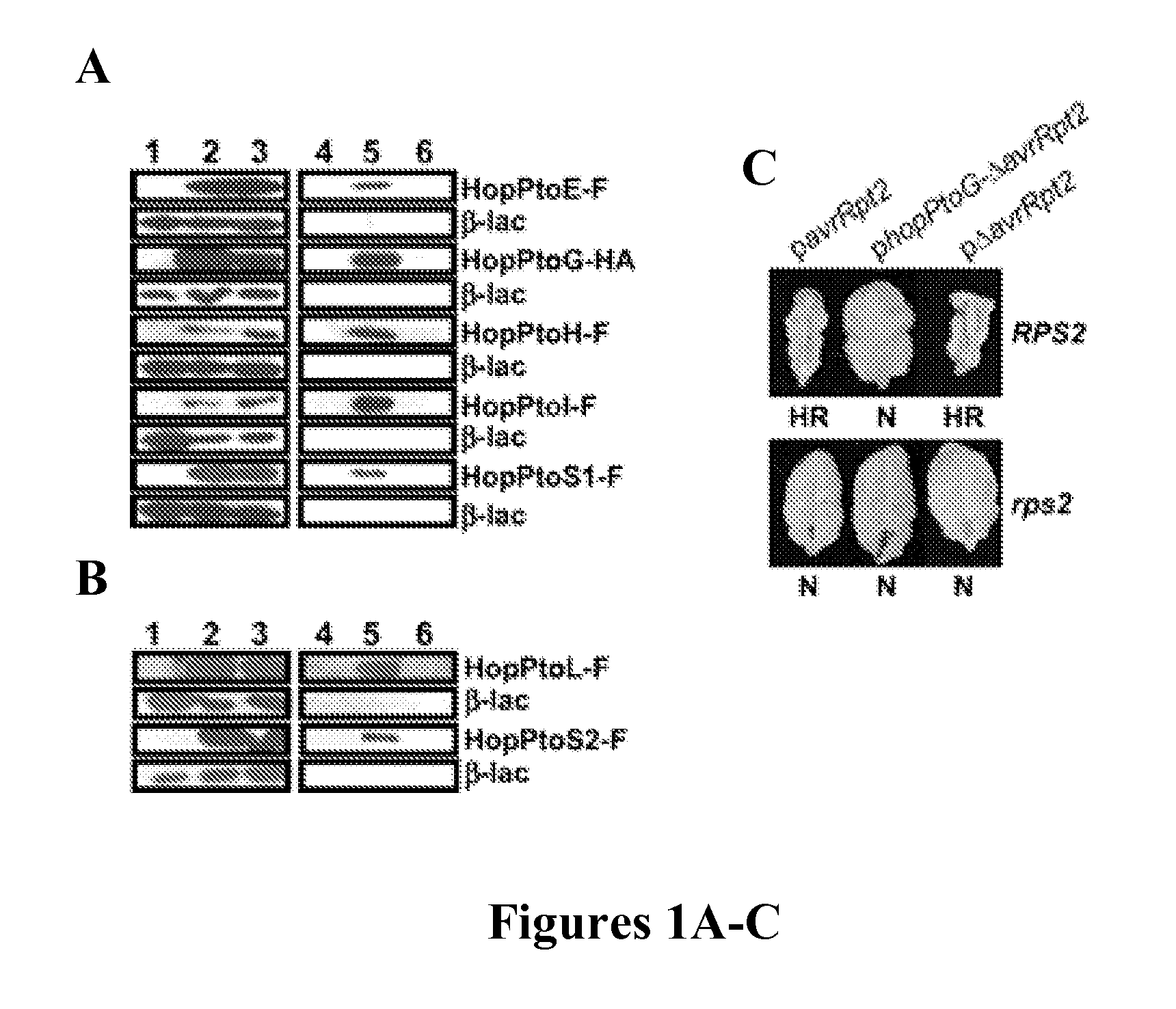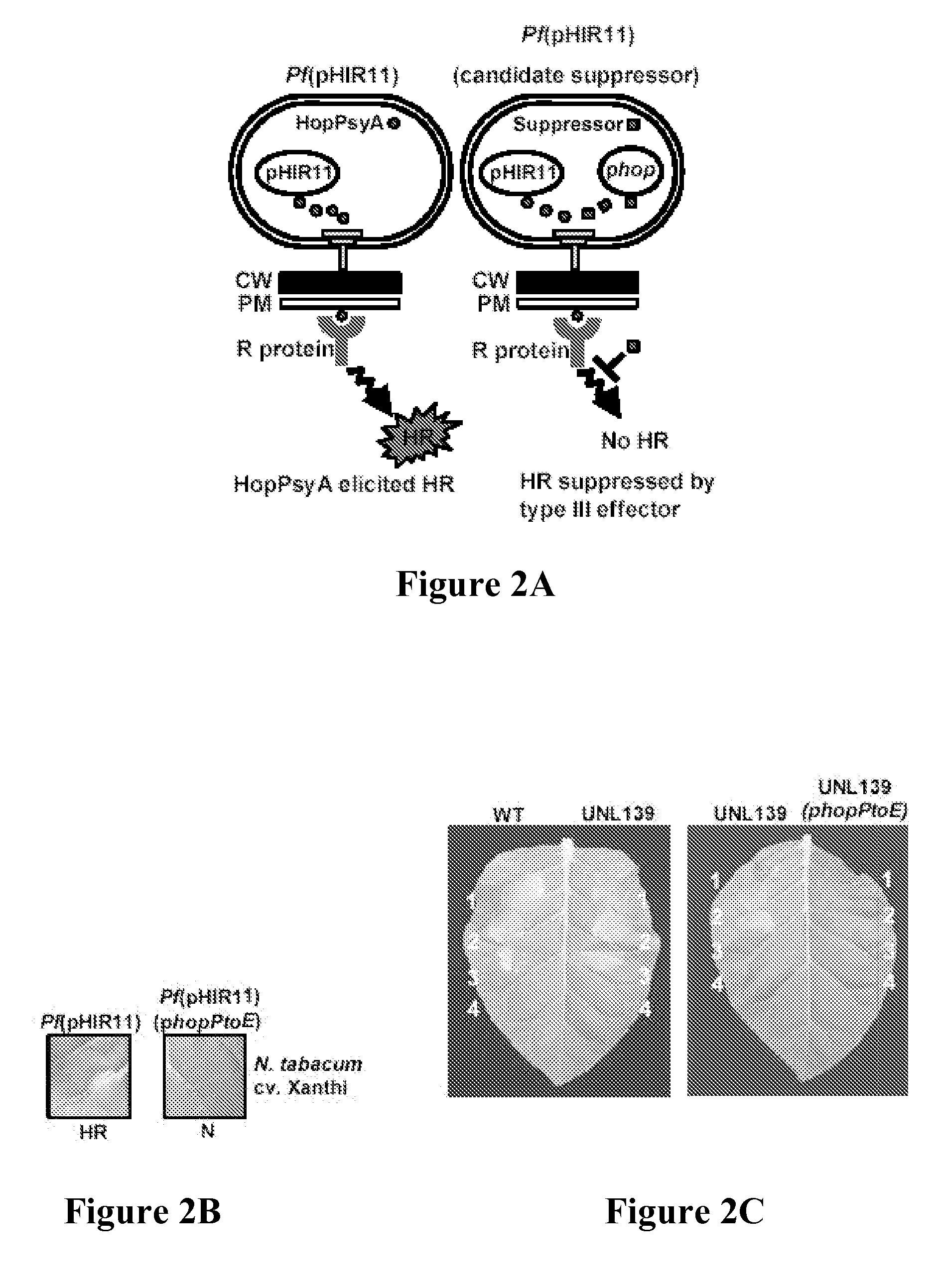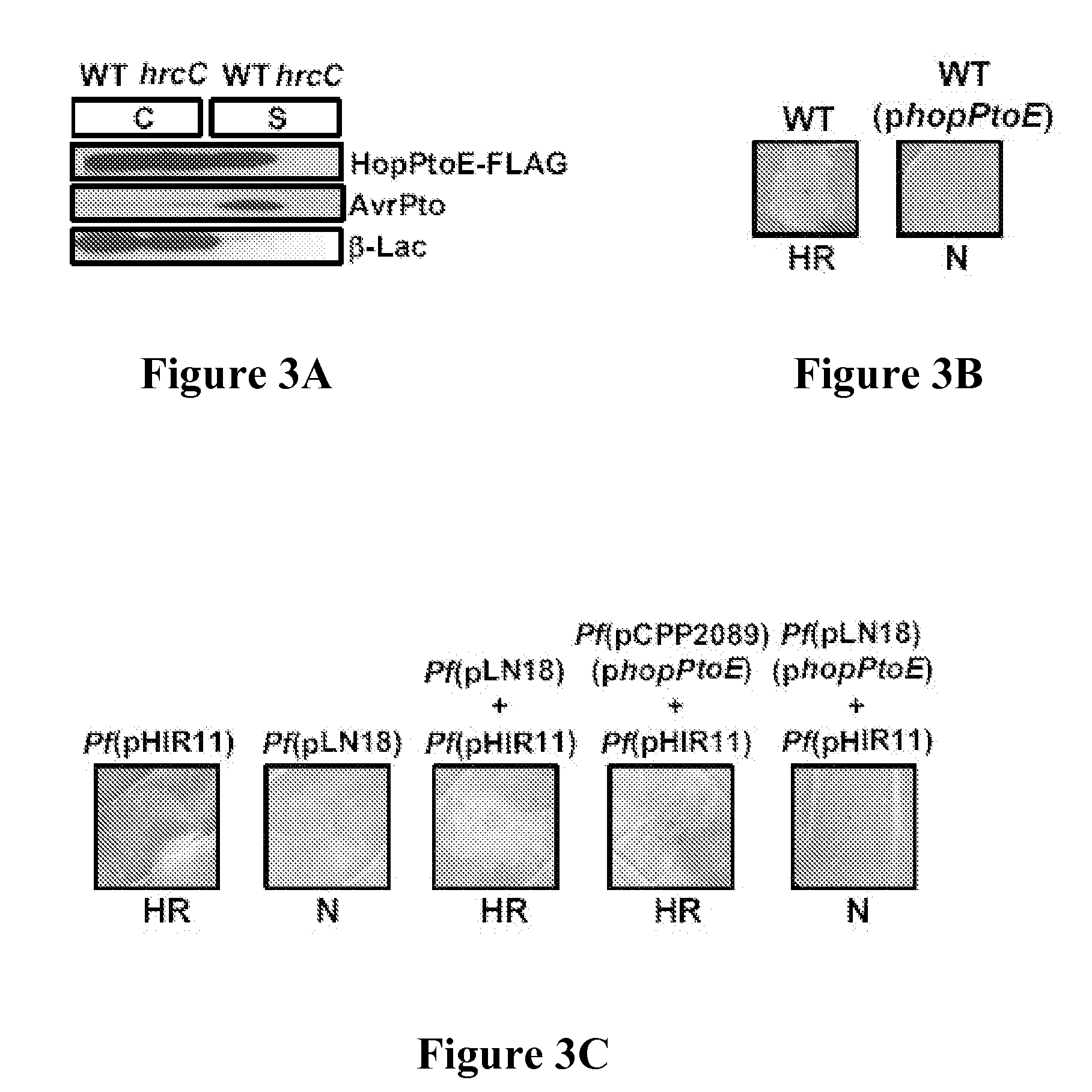Pseudomonas avr and hop proteins, their encoding nucleic acids, and use thereof
a technology which is applied in the field of pseudomonas avr and hop proteins, their encoding nucleic acids, and can solve problems such as preventing the search for type iii effector genes
- Summary
- Abstract
- Description
- Claims
- Application Information
AI Technical Summary
Benefits of technology
Problems solved by technology
Method used
Image
Examples
example 2
ranslocation Assay Indicates that at Least One of the Additional Hops is Translocated into Plant Cells
[0252] HopPtoG was selected to test for translocation into plant cells because it shared no similarities with any sequences in the databases and was shown to be secreted (FIG. 1B). P. s. phaseolicola carrying a plasmid expressing hopPtoG-ΔavrRpt2 elicited an RPS2-dependent hypersensitive response in A. thaliana Col-0 (FIG. 1C), indicating that targeting information in HopPtoG directed translocation of the AvrRpt2 fusion protein into plant cells. Thus, HopPtoG appears to be a Hrp-injected effector protein.
Discussion of Examples 1-2
[0253] One demonstration of the selectivity of the export signal rules is that only the chicken ADP-ribosyltransferase NRT2CHK shows major violations of the rules even though this protein is more similar to HopPtoS1 and S2 than either of the type III-secreted ADP-ribosyltransferases from P. aeruginosa, ExoS and ExoT (see Petnicki-Ocwieja et al., Proc. Nat...
example 3
uppresses the Hypersensitive Response in Tobacco and a DC3000 hopPtoE Mutant Possesses an Enhanced Hypersensitive Response Phenotype
[0255] In the course of experiments with confirmed DC3000 type III effectors, the effector HopPtoD2 was observed capable of suppressing the HR elicited by P. s. phaseolicola on Nicotiana benthamiana plants. These results prompted the screening other effector proteins for HR suppressor activity (Collmer et al., Trends Microbiol. 10:462-470 (2002)). To do this, the pHIR11 system was used, allowing nonpathogens such as E. coli and P. fluorescens to elicit the HR and secrete effectors in culture via the TTSS. This tool allowed for testing whether individual effectors were capable of suppressing the HopPsyA-dependent HR as depicted in FIG. 2A. P. fluorescens(pHIR11) strains carrying a number of different effector constructs were infiltrated into tobacco (N. tabacum cv. xanthi). Interestingly, HopPtoD2, the effector that suppressed an HR elicited by P. phaseo...
example 4
oes Not Block the DC3000 Type III Secretion System
[0257] One possible explanation for the observed phenotypes was that HopPtoE was blocking the type III secretion of other type III substrates, including Avr proteins. There is actually a precedent for type III substrates, such as HrpZ and HrpW, to block the type III secretion of proteins from P. syringae (Alfano et al., Mol. Microbiol. 19:715-728 (1996); Charkowski et al., J. Bacteriol. 180:5211-5217 (1998), each of which is hereby incorporated by reference in its entirety) and it was crucial to consider this alternative. To test this, DC3000 and a DC3000 hrcC mutant defective in the TTSS, both carrying plasmids that contained avrPto and hopPtoE, were grown in a medium that induced type III secretion. These cultures were separated into supernatant and cell fractions, and analyzed them by SDS-PAGE and immunoblots with either anti-FLAG or -AvrPto antibodies. Both AvrPto and HopPtoE were secreted in culture via the TTSS (FIG. 3B), indic...
PUM
 Login to View More
Login to View More Abstract
Description
Claims
Application Information
 Login to View More
Login to View More - R&D
- Intellectual Property
- Life Sciences
- Materials
- Tech Scout
- Unparalleled Data Quality
- Higher Quality Content
- 60% Fewer Hallucinations
Browse by: Latest US Patents, China's latest patents, Technical Efficacy Thesaurus, Application Domain, Technology Topic, Popular Technical Reports.
© 2025 PatSnap. All rights reserved.Legal|Privacy policy|Modern Slavery Act Transparency Statement|Sitemap|About US| Contact US: help@patsnap.com



